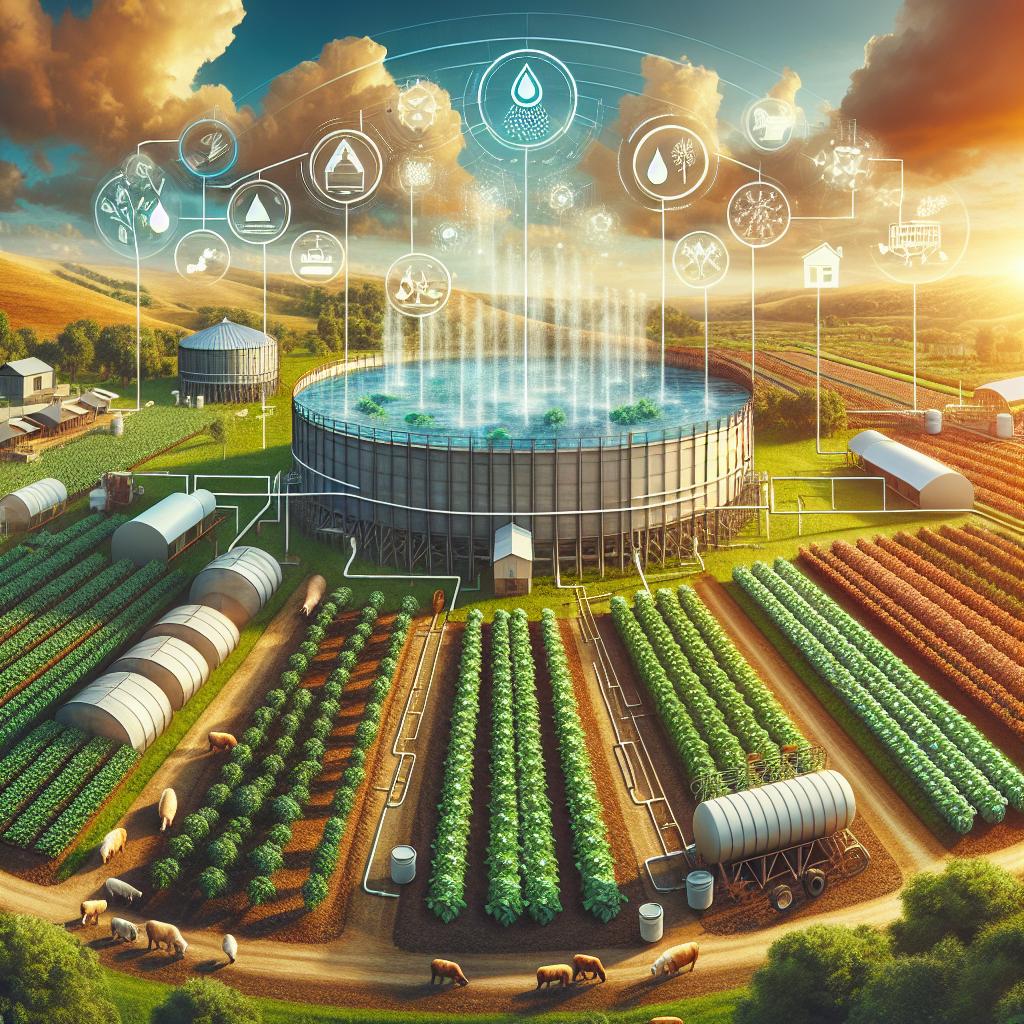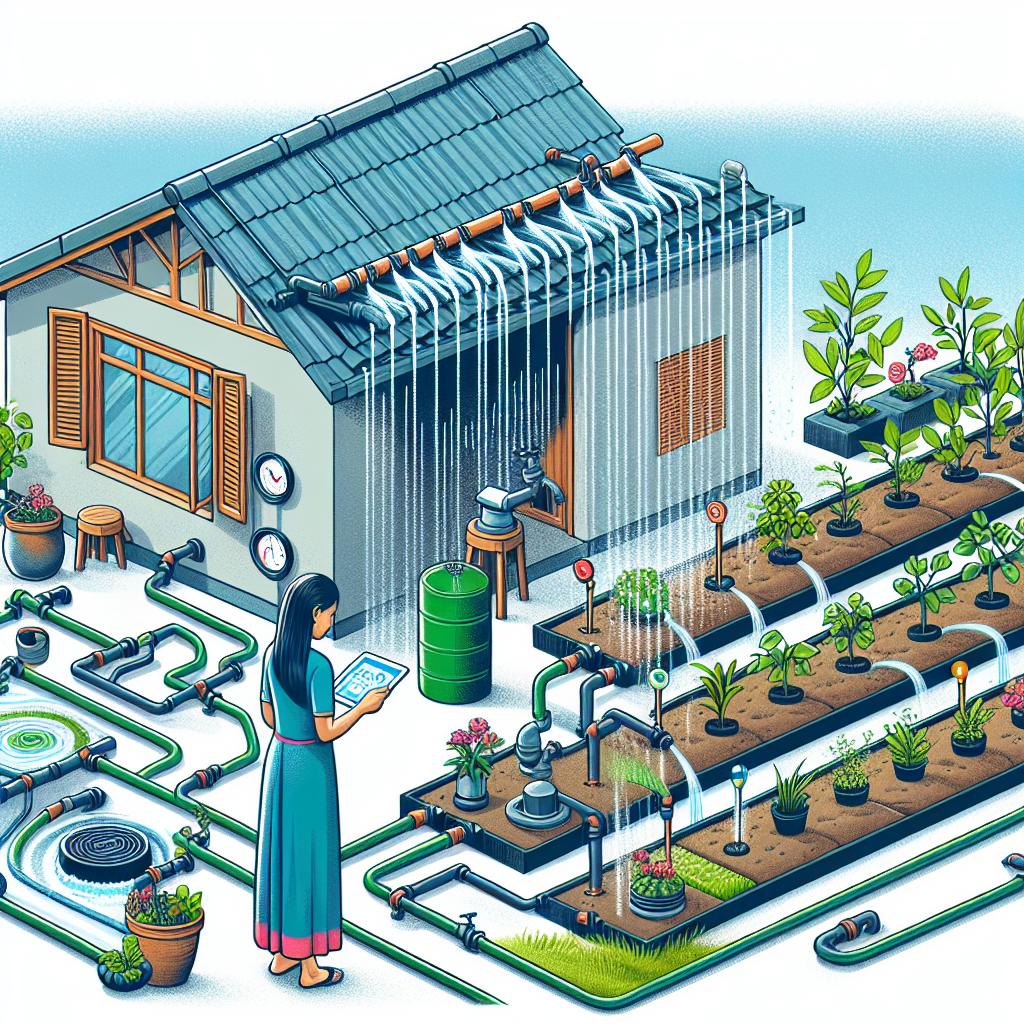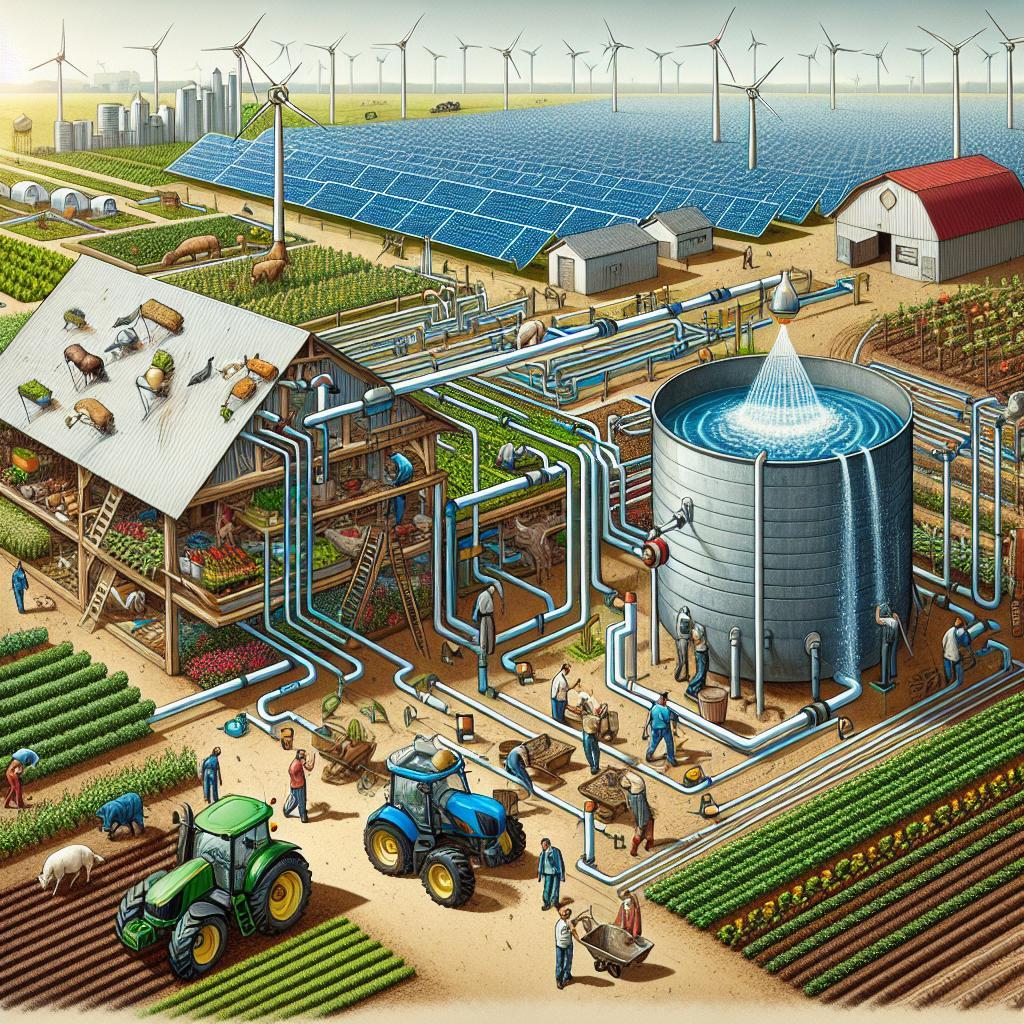This post may contain affiliate links which means I may receive a commission for purchases made through links. Learn more on my Private Policy page.
Harvesting the Sky: A kind Guide to Integrating Rainwater into Your Farm Irrigation
Imagine standing in the golden embrace of your farm, surrounded by lush fields and thriving crops, all while listening to the gentle patter of raindrops nourishing the earth. Rainwater, a free and abundant resource, has been providing the lifeblood for our crops since time immemorial. But in today’s world, where water scarcity is becoming increasingly common, it’s time to rethink how we harness the power of nature. Welcome to our friendly guide on incorporating rainwater harvesting into your farm irrigation system!
In this article, we’ll explore the simple yet effective ways to catch this precious resource from the skies and channel it directly to your crops. Whether you’re a seasoned farmer or just starting out, we’ll walk you through the steps to create a enduring, eco-friendly irrigation system that not only benefits your crops but also protects our planet. So, grab a cup of coffee, roll up your sleeves, and let’s dive into the splendid world of rainwater harvesting—where every drop counts!
Understanding Rainwater Harvesting and Its Benefits for your Farm
implementing rainwater harvesting on your farm can substantially enhance water conservation and reduce dependency on conventional water sources. By installing systems that collect, store, and utilize rainwater, you not only ensure a sustainable water supply for irrigation but also contribute to environmental conservation. By utilizing a few key components, you can make the most of this natural resource:
- Gutters and Downspouts: Direct rainwater from roofs into storage tanks.
- Storage Tanks: Use large cisterns or barrels to hold the collected water.
- Filtration Systems: Ensure the water collected is clean for irrigation purposes.
- Distribution System: Set up a series of pipes and hoses to deliver water to crops efficiently.
Incorporating rainwater harvesting into your irrigation practices not only cuts costs but also provides resilience against droughts. To maximize the benefits, consider a simple method for calculating your potential rainwater harvest based on your farm’s roof area. The following table illustrates the estimated volume of rainwater collected from different roof sizes during a heavy rainstorm (1 inch of rainfall):
| roof Area (Square Feet) | Collected Rainwater (Gallons) |
|---|---|
| 500 | 310 |
| 1,000 | 620 |
| 1,500 | 930 |
| 2,000 | 1,240 |
By starting with rainwater harvesting, you’re taking a valuable step toward sustainable farming. The long-term benefits not only enhance productivity but also contribute positively to the ecosystem and help secure water resources for future generations.

Setting Up Your Rainwater Collection System with Easy-to-Follow Steps
setting up a rainwater collection system is both an eco-friendly and cost-effective way to enhance your farm’s irrigation.Start by identifying key areas where rainfall collects naturally, such as roofs or paved areas. install gutters and downspouts to channel this water into your collection system.make sure to select a storage tank made from non-toxic materials and that is large enough to meet your irrigation needs. Once your tank is in place, incorporate first-flush diverters to ensure that the initial runoff, which may contain debris and pollutants, is discarded before the clean rainwater is stored.
To enhance the efficiency of your system, consider implementing a filtering system before the water enters the storage tank. This can significantly reduce contaminants and improve water quality for irrigation purposes. Additionally, integrating a drip irrigation setup will maximize the utility of harvested rainwater. Here’s a simple overview of components you may want to include in your setup:
| Component | Description |
|---|---|
| storage Tank | Collects and stores rainwater for use. |
| Gutters & Downspouts | Channel rainwater from roofs to the tank. |
| First-Flush Diverter | Discourages contaminants from entering the tank. |
| Filtering System | Removes debris before water enters the tank. |
| Drip Irrigation | Efficient water delivery directly to plants. |

Maximizing Efficiency: Integrating Harvested Rainwater into Your Irrigation Plan
To seamlessly integrate harvested rainwater into your irrigation plan, start by establishing a comprehensive collection system. Utilize gutters and downspouts to direct rainwater from roofs into storage tanks or cisterns. Consider the following components to enhance your system’s efficiency:
- Size the storage tanks appropriately to meet your irrigation needs.
- Install filtration systems to ensure water quality before usage.
- Connect to a pump for easy distribution through your irrigation system.
Next, implementing a strategic irrigation schedule is crucial for maximizing the impact of your rainwater collection. Consider employing drip irrigation to minimize water loss and target plants effectively. Here’s a simple comparison of irrigation types that can influence your water usage:
| Irrigation Type | Water Efficiency | Ideal Usage |
|---|---|---|
| Drip Irrigation | 90-95% | Row crops, gardens |
| Sprinkler System | 70-80% | Lawn, large fields |
| Surface Irrigation | 60-70% | Flood-prone areas |
By leveraging rainwater harvesting alongside efficient irrigation practices, your farm can significantly reduce water costs while contributing to sustainable agriculture.

Maintaining Your System: tips for Optimal Performance and Longevity
Integrating rainwater harvesting into your farm’s irrigation system not only conserves water but also boosts the sustainability of your agricultural practices. To start, install a collection system that captures rainfall from rooftops or other surfaces. Ensure that your storage tanks are weatherproof,durable,and appropriately sized to accommodate seasonal rainfall variations.Consider utilizing a first-flush diverter to optimize water quality by removing initial contaminants.Maintain clean gutters and downspouts regularly so that your harvested water remains free of debris and pollutants.
Once your system is established, incorporate it effectively into your irrigation schedule. you can utilize timers to automate the watering process, ensuring your crops receive a consistent supply of nutrient-rich rainwater. Additionally, consider using a drip irrigation system that allows for precise watering directly at the plant roots, reducing evaporation loss. Here’s a simple table to illustrate planting suitability based on rainfall availability:
| crop | Rainfall Requirement |
|---|---|
| Tomatoes | Moderate |
| Potatoes | High |
| Lettuce | Low |
| Beans | Moderate |
| Carrots | Low |
Wrapping Up
As we wrap up our journey through the world of rainwater harvesting, remember that every drop counts! By integrating this sustainable practice into your farm’s irrigation system, you’re not only conserving water but also nurturing the very land that nurtures you. Imagine the satisfaction of watching your crops thrive, nourished by nature’s purest gift, while contributing to a healthier planet.
So,grab those barrels,install those gutters,and let the rain work its magic on your fields! Whether you’re a seasoned farmer or just starting your agricultural adventure,incorporating rainwater harvesting can transform your approach to irrigation—and maybe even lead to a few friendly conversations with your neighbors about your innovative methods.
Let’s cultivate not just crops, but also a community that embraces sustainability! Happy harvesting, and may your farm flourish with every storm that rolls in!
This post may contain affiliate links which means I may receive a commission for purchases made through links. Learn more on my Private Policy page.

